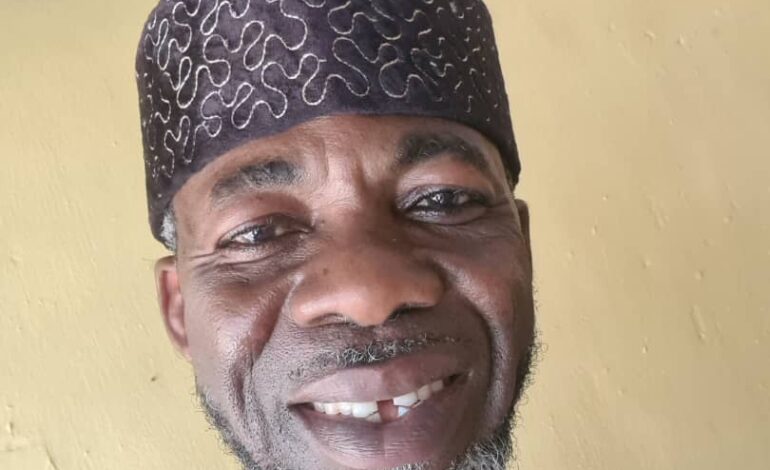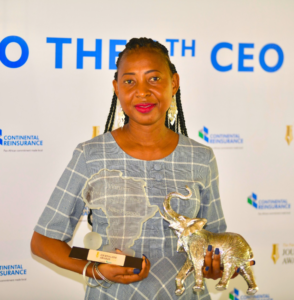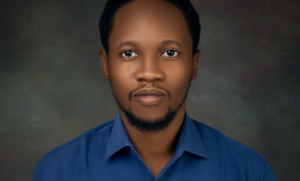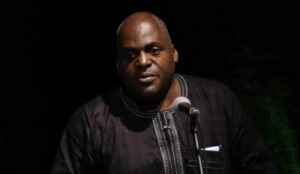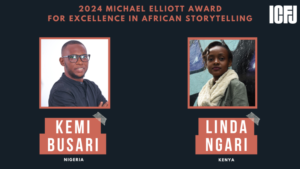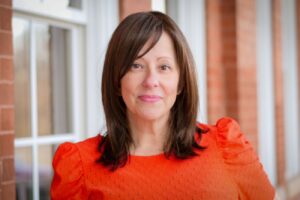Assistant Director, Strategic Planning & Corporate Development Voice of Nigeria and Director, Media & Strategic Communications, Muslim Public Affairs Centre, MPAC Nigeria, Abdulwarees Solanke, FCIPDM writes on his ‘colourful’ upbringing by his father who was a painter.
I am a painter’s son. From childhood, Baami imbued in me the love for paint and brush. I saw him mix paints of different colours to get a different hue. I watched him sing as he climbed the ladders to paint storey buildings and high ceilings. I joined him in cutting stencils to make imprints and signs.
I risked standing beside him as he poured lime, efun, into water, resulting in a hot boiling mixture that bubbles, to whitewash or do the preparatory coating. He taught me about the scrapper, the sandpaper, the thinner, the turpentine and the poly filler.
Painting is about beauty, about aesthetics, bringing out the finesse in bare concrete. A home finishing is as fine as the ingenuity of its painter whose sense of colours and their combination often guides the house owner. He also imbued in me another form of aesthetics, the love for nature as he planted beautiful flowers in disused containers, placing them delicately on the windows of his rented congested parlour at our residence located in downtown Oke Foko, Ibadan, the Oyo State capital where I was born.
He lived most of his adult life in Ibadan working as a painting craftsman at the maintenance Department of the University of Ibadan, between 1957 and 1978. He enrolled me in Abadina, UI in 1973 where I schooled like the son of a scholar although he was an artisan. But people salute him as the Doctor as he referred to himself as a philosopher. He died as a pensioner in 2000, while I was struggling as a writer in the dead Concord.
While he lived, I found in him a love for the printed word.
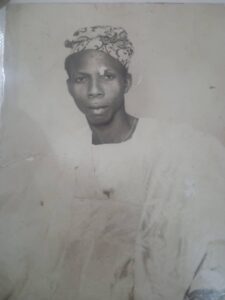
Though he never attended a formal Western school in his life, he schooled himself in the three Rs, reading, writing and ‘rithmetic so he could fit into his environment. He read Imole Owuro, Gboungboun and Isokan, and he also bought me Atoka and Aworerin, all these Yoruba vernacular publications of the latter part of the last century.
As I rummaged through his piles of old papers and brochures in those days, I found flowers and fruits and faces to cut to fancifully deface our parlour. He found no fault in my creative fervour. He also bought me crayons and watercolours, and he was most especially interested in my books. He missed no item on my list of books as each new school session approaches.
In 1978, he took me to Asero, the parlance we call Egba High in Abeokuta where I was grounded in the Arts subjects. He saw me go to Baptist High School, Adeke, Iwo where I sat for papers in History, Economics and Literature. Just as he taught me the prayer, robbi zidnin ilma wa fahamana, {My Lord, increase me in knowledge and understanding) written on my jeleosinmin slate to memorize in my primary one. He prayed for my success at the University of Lagos where I studied Mass Communication and graduated in 1988.
He was always assuring me that my name would ring in all corners of the world for good. Throughout his life, he never stopped teaching me from the Quran and sharing insights on human aesthetics with me. From him and my mother, also late, I took lessons on how the minds of men work and how their character is soiled and straightened, how not to impugn others and how to preserve honour, how to attract friends and keep them and how to make home and living or strengthen the family bond.
They also taught me to love my root, Abeokuta, although Ibadan is where we lived and thrived, where my mother died but brought to Abeokuta to sleep. So despite their death, we hardly miss Ileya, Hari Raya Qorban in Ikija at the root of Olumo Rock.
In this colourful upbringing, I have come to understand the dimensions of aesthetics beyond the paint and the brush, beyond mixing colours, beyond the ordinary written word, sometimes cold and lifeless, beyond the mere sound of music, the cacophony of drum beats and the fluidity of the body gyrating to the symphony of flutes, strings, cymbals, tones and tunes.
Arts is not merely about revelry but should be spiritually elevating, invigorating, energizing, inspiring, fulfilling and consoling. When we consider the aesthetics of words and sounds, of pieces from the soul, we want to see colour and elegance, we want to see order in their organization and presentation.
We want to see the mood of the speaker or the writer. We want to see simplicity in flow and cadence, its content and context for its meaning to make an impact. We want to see realism and surrealism, we want to gauge its reach, perspective and depth.
When we listen to music, we are not only interested in the sound or beat or the arrangement of its composition; we want to feel its elevating strength, we want to see the mood of the composer and connect with his world and how he connects with ours.
The aesthetics of any art piece is in the personality or character of the producer. It comes from his soul, with his vision, his experiences, feelings and values. It comes with his spirituality.
The true and faithful artist makes meaning from the madness of the moment and tries to bring order into it with his talent. He sees colours and beauty from the darkness of the world and with his fervour brings out hope. He also sees bullets, blood and tears from the carelessness and impunity around him and cautions about their danger.
When the artist, as a man aesthetics, gets disoriented and loses vision, his work loses meaning and beauty. Today, I see no meaning and beauty in many artworks I come across whether as painting, music, sculpture, drama, film, poetry or essay. I read books now and I see the depravity of the writer’s mind. I watch dramas, movies and films and see deviance in their producers.
I see paintings, sculptures and some graphics and observe disorder and madness in the brains behind them. I ask why. Has the modern artist lost human essence and so is now empty? Is the modern artist a lost soul? Does he no longer possess intellect, character and spirituality? What is the motivation of the modern artist?
In their themes, I find only intoxicating wine, lurid pictures, obscene women and obnoxious wealth. I see bestiality. I see beauty now bloodied by the worms of the flesh, cancer of the brain, infections of the heart and afflictions of the soul.
Most of today’s artists need a messiah, in need of a redeemer because when you come across them through their works, you see them as sons and daughters of Shaytaan, chained by the shayaatins and the jinns. So, they need ruqyah, to exorcise them of their afflictions that are also infecting our world with noxious notions and value of human beauty.
The true worth or beauty of a man, as an artwork of the al-Khaaliq or the Potter, Allah lies in the purity of his soul, the perspicacity of his intellect, and the nobility of his character. It is to be measured by his sincerity of intention, the depth of his faith, the firmness of his conviction, the richness of his thoughts and the correctness of his choices, decisions and actions.
Now, most modern artists and their artworks in prints, canvas, clay, stones, wood, panels, picture and cardboard, oil on canvas, pencils, photography and films, are empty of noble themes, forms and aesthetics. They are living for fame yet dead in soul, brain and mind.
Pity most of today’s artists.
Journey from UNIBADAN
This article was August 2018 when the University of Ibadan clocked 70 having been established as a college of the University of London in 1948.
Just reflecting on my personal growth, I realize my foundation too was laid on the soil of UI having attended it’s junior staff school, Abadina School between 1973 and 1978 exiting at primary five to start secondary school in Abeokuta, Egba High School.
In this reminiscence, I pay tribute to the UI managers then who deemed it fit to establish a standard school for children of its junior workforce.
Some nine years after the establishment of The University of Ibadan, that is 1957, Baami then in his early or mid 30s left Abeokuta in search of a job to sojourn in Ibadan. Employment was facilitated for him at UI by a brother-in-law married to one of his cousins. Mr. Oduola, a middle-level staff in the carpentry section of the maintenance department, Maami UI’s husband was Baami’s gaari tira for his employment in the painting section.
So began the history of my Ibadanness. Nine years after Baami settled in Ibadan, I was born, destined to be a UI product in some way.
At age seven in 1973, Baami brought me to Abadina School, University of Ibadan where I started my primary education, although I had been exposed to some three to four years preage jeleosinmi at oke foko, where I was born in 1966 and at oke bola, a sort of transitional coaching class. Liberty Preparatory Coaching Class popularly called Lesini Eda in the Ojimi area of Oke Foko was like my Nursery School where I had learned everything a primary one or two pupil should know. But I was under seven.
READ ALSO: 35 years on: Salute to my media career mentors
Initially, when I was enrolled, Baami was taking me daily from Foko to UI, quite some distance, on his mobylette bought from the Udoji pay of 1972. But it was risky. So Baami’s cousin Aunty Adunni also known as Iya Ikimo Oloole advised that I reside with her at Abadina Community, a large quarters of junior and middle level staff of UI who came from all over the country.
The initial arrangement was to be spending weekdays at UI and the weekends in Foko. Eventually, I became a permanent UI resident of Abadina.
Abadina was a vibrant multi-cultural community which represented the Nigerian ethnic fabric. We lived and made friends in Abadina, some even had intercultural marriages. I was a witness of the silver jubilee anniversary of UI in 1973 which the three staff schools on campus were involved. Staff School, Abadina School and International School presented playlet playlets under the brightly decorated glowing Christmas trees around the area that has now been fully developed as the Religious Zone. We had fun at UI at 25. Special uniforms were sewn for pupils in commemoration of the anniversary.
During my five years at Abadina, I indeed blossomed as a little scholar. The class was not an issue at Abadina as children of artisans and those of professors and senior staff of the university who could not afford to put all their wards at School School where you also had children of expats, awon omo oyinbo, had no complex mingling. Hardly was I ever floored in any examination by a son or daughter of a professor, PhD holder or director in my class.
Abadina shaped my dream to be a scholar and be married to a scholar as I was always fascinated by the nameplates or addresses of homes Baami was regularly assigned to paint around the campus. Dr. & Dr Mrs. Prof. & Prof. etc.
From Abadina, I knew the value of the Library as I regularly visited the Abadina Resource Center at our second gate to read and loan books, especially the Ladybird series. I remember Gulliver’s Travels for instance. Oh. The Treasure Island too. Many, of my friends at Abadina were children of academics, I remember Bayo Akintobi, Oyefunke Oyewole, Abiye & Mina Amakiri for instance. I also had Emeka Okoye, Karimu Musa, Donatus Utuks, Lamidi Yakubu, Opeyemi Owadayo and one of the princesses of Oba Lamidi Adeyemi as colleagues.
Growing up in such a diverse setting where neither class, creed nor tongue was an issue was indeed exciting.
Towards the end of the third term of our primary 4 in 1977, my class teacher advised Baami to obtain the National Common Entrance Examination form for me. We did the exam early in our primary five. Egba High School Abeokuta was my choice. In primary five, I obtained the Oyo state common entrance examination too, applying for Government College Ibadan.
When both results were released, I passed, although, for my Oyo State common entrance, my choice was changed to Fatima College, a Catholic secondary school in Ikire. Well Egba High School was already secured
At Asero Abeokuta I resumed in September 1978 exactly 40 years ago to begin serious schooling.
My five years at the,Abadina University of Ibadan was a solid foundation for my education as it also defined my cosmopolitanism. As pupils at Abadina UI we luxuriated in all forms of adventures, entering bushes during break time to pluck almond fruits, iyeye and obi edun. There was no student residential hall and our escapades did not take us. We were regular visitors to the zoo and the botanical gardens. We always go to UI Conference Center, the staff club and its swimming pool as well as the bookshop for sightseeing.
We knew all the nooks and crannies of UI and whenever there was a crisis on campus our escape route was the third gate which separates UI from The Polytechnic, Ibadan. Since leaving UI 40 years ago, I never had the real opportunity to return as my education at Ibadan stopped with Abadina.
My secondary was between Abeokuta for O level and Iwo for A level, while I completed my University in Lagos, exactly 10 years after I exited Abadina, a junior and middle-level staff primary school at the University, of Ibadan. Nonetheless those five years between 1973 and 1978 in the UI campus are essential to my total makeup.
In August last year, I returned to UI for a function in the iconic Trenchard Hall of UI, I used the opportunity to return to my schooling roots to savour some of my childhood breath on campus. Despite age, I found UI still retains its verdant landscape. Years and generations of students have not tampered with its virginity. I can still vividly recollect our campus trails of more than four decades.
On UI at 70, I salute its past and present managers for their fidelity to the tradition that has given UI a cutting-edge advantage, although I cannot trade away my UNILAG pride for Akoka where I trained as a journalist where I was fully bred or refined in academics and professionalism. Up UI, Great Akokite. Alhamdulillah!
